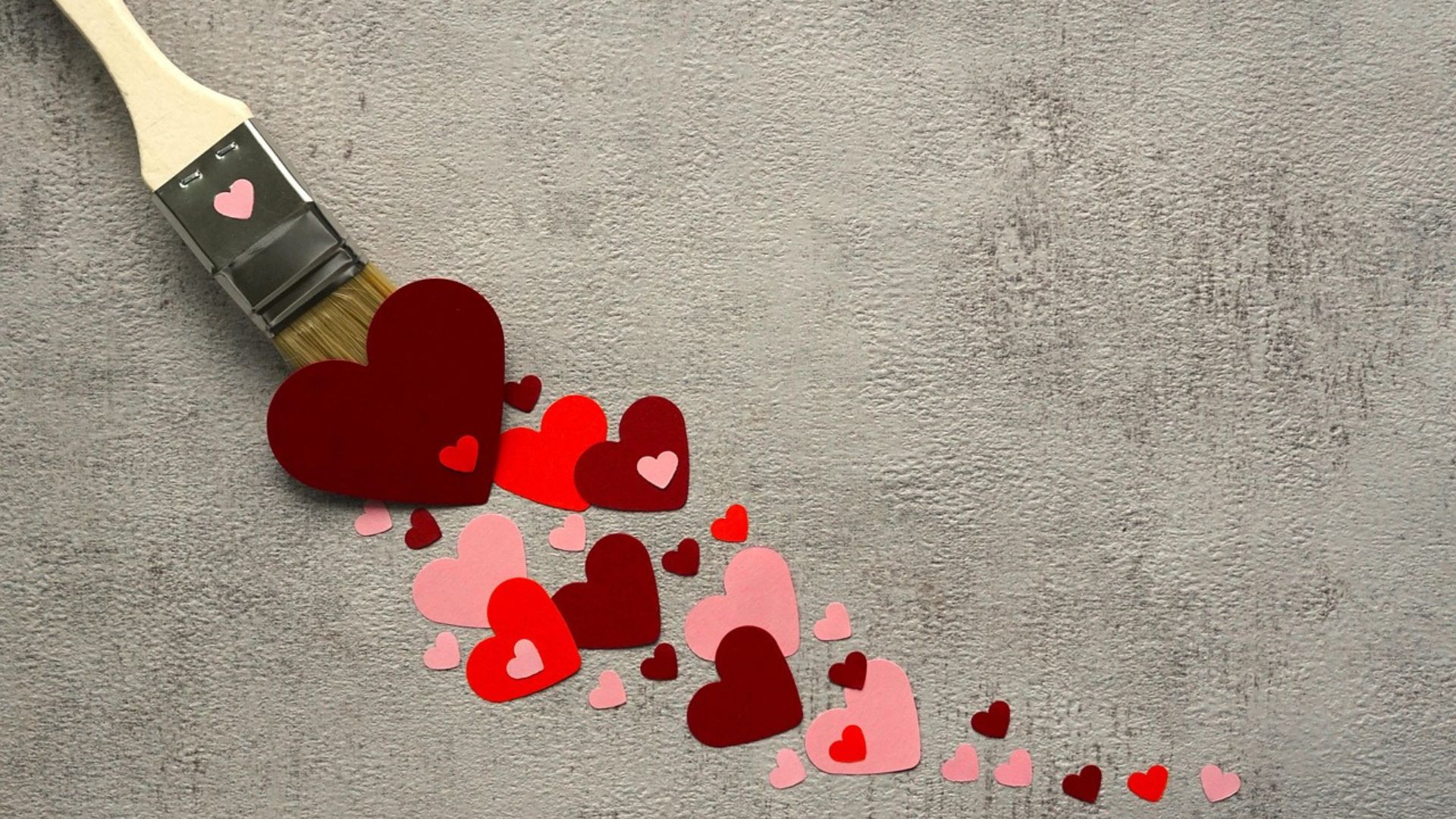
Painting has been one of the most powerful forms of artistic expression for centuries. From the caves of prehistoric times to the digital tablets of the modern era, artists have always sought new ways to express emotions, stories, and perspectives through paint. Each style and technique represents not just an artistic choice but also a reflection of culture, philosophy, and creativity.
In this blog, we’ll explore the different types of painting styles and techniques from the traditional classics to modern experimental forms to understand how diverse and fascinating this art truly is.
Traditional Painting Styles
Oil Painting:
Oil painting is one of the oldest and most widely respected forms of painting. Artists use pigments mixed with oil (often linseed) to create vibrant and long-lasting artworks.
Characteristics of Oil Painting
- Slow drying time, allowing blending and layering.
- Rich texture and depth.
- Durable many Renaissance oil paintings still survive today.
Techniques in Oil Painting
- Glazing: Applying thin layers of transparent paint.
- Impasto: Thick application of paint for texture.
- Scumbling: Light brushing of opaque paint over dried layers.
Watercolor Painting
Watercolor painting uses pigments mixed with water, usually applied on paper. It is popular for its softness and transparency.
Characteristics of Watercolor
- Fluid and unpredictable, creating organic effects.
- Portable and beginner-friendly.
- Often used for landscapes, floral art, and illustrations.
Techniques in Watercolor
- Wet-on-Wet: Applying paint on a wet surface for soft blends.
- Dry Brush: Using minimal water for textured strokes.
- Salt Technique: Adding salt for unique textures.
Acrylic Painting
Acrylics are versatile, fast-drying paints that can mimic oil or watercolor effects depending on how they’re used.
Characteristics of Acrylic Painting
- Quick drying and flexible.
- Vibrant colors that don’t yellow over time.
- Works on multiple surfaces (canvas, wood, glass, fabric).
Techniques in Acrylic Painting
- Pouring: Creating fluid abstract designs.
- Palette Knife: Bold, textured strokes.
- Layering: Building up colors for depth.
Modern and Contemporary Painting Styles
Abstract Painting
Abstract art focuses on shapes, colors, and emotions rather than realistic representation.
Characteristics of Abstract Painting
- No need for subject accuracy.
- Strong focus on color harmony and design.
- Expresses moods, energy, and concepts.
Popular Abstract Techniques
- Geometric Abstraction: Using structured shapes.
- Action Painting: Drip and splatter methods (Jackson Pollock style).
- Color Field Painting: Large areas of single colors.
Impressionism
Born in 19th-century France, Impressionism emphasizes capturing the impression of a moment rather than details.
Characteristics of Impressionism
- Loose brushwork.
- Focus on light and color.
- Outdoor (plein air) painting.
Techniques in Impressionism
- Dappled Light: Quick brushstrokes to mimic sunlight.
- Broken Color: Applying separate colors side by side.
- Alla Prima: Painting directly without underpainting.
Surrealism
Surrealist paintings reflect dreams, imagination, and subconscious thoughts.
Characteristics of Surrealism
- Fantasy-like, dream-inspired visuals.
- Often blends realism with bizarre elements.
- Inspired by psychology and Freud’s theories.
Techniques in Surrealism
- Automatism: Free-flow drawing without conscious control.
- Juxtaposition: Placing unrelated objects together.
- Photorealistic Surrealism: Realistic style with imaginative twists.
Pop Art
Pop Art emerged in the 1950s, focusing on popular culture, advertising, and media.
Characteristics of Pop Art
- Bold colors and comic-like lines.
- Everyday objects turned into art.
- Inspired by mass media and consumerism.
Techniques in Pop Art
- Ben-Day Dots: Printing-style dots for shading.
- Collage: Using magazine and advertising elements.
- Bold Outlines: Cartoon-style painting.
Specialized Painting Techniques
Fresco Painting
An ancient technique where artists paint directly onto wet plaster walls. Famous in the Renaissance period (Michelangelo’s Sistine Chapel).
Encaustic Painting
Uses heated beeswax mixed with pigments. Known for durability and rich texture.
Gouache Painting
Similar to watercolor but more opaque. Great for illustrators and poster design.
Ink Wash Painting
Popular in East Asian art, using black ink to create gradients and delicate textures.
Digital Painting – The New Age
With technology, painting has shifted from canvas to screen. Digital painting combines traditional techniques with advanced tools.
Characteristics of Digital Painting
- Unlimited undo and layers.
- Customizable brushes.
- Ideal for concept art, illustration, and animation.
Techniques in Digital Painting
- Layering: Working with sketch, base, shadow, and detail layers.
- Blending: Using soft brushes for smooth gradients.
- Photo Bashing: Mixing photos with painted elements.
- Digital Effects: Adding lighting, textures, and 3D elements.
How to Choose a Painting Style
If you’re an aspiring artist, choosing a painting style can feel overwhelming. Here are some tips:
- Experiment Broadly – Try different mediums to find what feels natural.
- Study Art History – Learn from masters of each style.
- Mix and Match – Create a hybrid style unique to you.
- Consider Your Purpose – For therapy, go abstract; for realism, try oil or digital.
Tips for Improving Painting Techniques
- Practice sketching daily to improve hand control.
- Focus on light and shadow, not just outlines.
- Limit your palette to understand color mixing better.
- Join art communities for feedback and inspiration.
- Keep experimenting – art grows through mistakes.
The world of painting is as vast as it is inspiring. From the delicate transparency of watercolors to the bold vibrancy of digital art, every style offers something unique. Whether you are fascinated by traditional realism, the expressive freedom of abstract art, or the limitless possibilities of digital painting, the journey of exploring painting styles is a rewarding adventure.
Remember, there’s no “right” style, only the one that resonates with your creativity and vision. The best way to master painting is to experiment, practice, and enjoy the process of bringing your imagination to life on canvas or screen.
Diferentes tipos de estilos y técnicas de pintura
La pintura ha sido una de las formas más poderosas de expresión artística durante siglos. Desde las cuevas de la prehistoria hasta las tabletas digitales de la era moderna, los artistas siempre han buscado nuevas maneras de expresar emociones, historias y perspectivas a través del color y el trazo. Cada estilo y técnica no solo representa una elección artística, sino también un reflejo de la cultura, la filosofía y la creatividad de su tiempo.
En este blog exploraremos los diferentes estilos y técnicas de pintura, desde los clásicos tradicionales hasta las formas modernas y experimentales, para entender lo diverso y fascinante que puede ser este arte.
Estilos de pintura tradicional
Pintura al óleo
La pintura al óleo es una de las técnicas más antiguas y respetadas. Se elabora mezclando pigmentos con aceites (generalmente de linaza) para crear obras vibrantes y duraderas.
Características de la pintura al óleo
- Tiempo de secado lento, ideal para mezclar y trabajar en capas.
- Textura rica y profunda.
- Muy resistente: muchas obras del Renacimiento aún se conservan.
Técnicas en óleo
- Glaseado: capas delgadas de pintura transparente.
- Impasto: aplicación gruesa para dar textura.
- Veladura: brochazos ligeros de pintura opaca sobre capas secas.
Pintura en acuarela
La acuarela utiliza pigmentos mezclados con agua y se aplica generalmente sobre papel. Es conocida por su suavidad y transparencia.
Características de la acuarela
- Fluida y a veces impredecible, con efectos orgánicos.
- Portátil y accesible para principiantes.
- Usada en paisajes, flores e ilustraciones.
Técnicas en acuarela
- Húmedo sobre húmedo: pintar sobre superficie mojada para lograr difuminados suaves.
- Pincel seco: poca agua para obtener trazos con textura.
- Sal: crear efectos únicos al espolvorear sal sobre la pintura húmeda.
Pintura acrílica
Los acrílicos son versátiles y de secado rápido; pueden imitar el efecto del óleo o de la acuarela según cómo se usen.
Características de la pintura acrílica
- Secado rápido y flexible.
- Colores intensos que no amarillean con el tiempo.
- Se puede aplicar sobre múltiples superficies (lienzo, madera, vidrio, tela).
Técnicas en acrílico
- Pouring: vertidos fluidos para diseños abstractos.
- Espátula: trazos gruesos y texturizados.
- Capas: superposición de colores para mayor profundidad.
Estilos modernos y contemporáneos
Pintura abstracta
Se centra en formas, colores y emociones más que en la representación realista.
Características
- No busca exactitud en el tema.
- Importancia en la armonía y diseño de colores.
- Expresa estados de ánimo, energía o ideas.
Técnicas
- Abstracción geométrica: uso de formas estructuradas.
- Action painting: goteos y salpicaduras (estilo Jackson Pollock).
- Color field: grandes áreas de color uniforme.
Impresionismo
Nacido en Francia en el siglo XIX, busca capturar la impresión de un momento más que los detalles exactos.
Características
- Pinceladas sueltas.
- Enfoque en la luz y el color.
- Muchas veces se trabaja al aire libre (plein air).
Técnicas
- Luz moteada: pinceladas rápidas que imitan el sol.
- Color roto: colores aplicados uno junto al otro sin mezclar.
- Alla prima: pintar directamente sin capas previas.
Surrealismo
Refleja sueños, imaginación y pensamientos del subconsciente.
Características
- Visuales oníricos y fantásticos.
- Mezcla de realismo con elementos extraños o imposibles.
- Inspirado en la psicología y las teorías de Freud.
Técnicas
- Automatismo: dibujo libre sin control consciente.
- Yuxtaposición: objetos sin relación juntos en una obra.
- Surrealismo fotorrealista: estilo realista con giros imaginativos.
Pop Art
Surge en los años 50, inspirado en la cultura popular, la publicidad y los medios masivos.
Características
- Colores llamativos y líneas tipo cómic.
- Objetos cotidianos convertidos en arte.
- Influencia del consumismo y los medios.
Técnicas
- Ben-Day dots: puntos impresos para sombreado.
- Collage: uso de recortes de revistas y publicidad.
- Contornos gruesos: estilo caricatura.
Técnicas especializadas
- Fresco: pintar sobre yeso húmedo, usado en el Renacimiento (ej. la Capilla Sixtina de Miguel Ángel).
- Encausto: mezcla de cera de abeja caliente con pigmentos; muy duradera.
- Gouache: similar a la acuarela, pero opaca; usada en ilustración y carteles.
- Tinta lavada: tradicional en Asia oriental, usando tinta negra para gradientes delicados.
Pintura digital – La nueva era
Con la tecnología, la pintura pasó del lienzo a la pantalla. Combina técnicas tradicionales con herramientas digitales avanzadas.
Características
- Capas y “deshacer” ilimitados.
- Pinceles personalizables.
- Ideal para concept art, ilustración y animación.
Técnicas
- Capas: trabajar boceto, base, sombras y detalles por separado.
- Difuminado: pinceles suaves para degradados.
- Photo bashing: mezclar fotos con elementos pintados.
- Efectos digitales: luces, texturas y elementos 3D.
Cómo elegir un estilo de pintura
Si eres artista principiante, elegir un estilo puede parecer complicado. Aquí algunos consejos:
- Experimenta mucho: prueba distintos medios y encuentra lo que te acomode.
- Estudia historia del arte: aprende de los grandes maestros.
- Combina estilos: crea un híbrido propio y único.
- Piensa en tu propósito: para expresarte libremente, elige abstracto; para realismo, prueba óleo o digital.
Consejos para mejorar tus técnicas
- Practica dibujo diario para controlar mejor la mano.
- Enfócate en la luz y las sombras, no solo en los contornos.
- Limita tu paleta para dominar la mezcla de colores.
- Únete a comunidades de arte para recibir retroalimentación.
- Sigue experimentando: el arte crece a partir de los errores.
El mundo de la pintura es tan vasto como inspirador. Desde la transparencia delicada de la acuarela hasta la intensidad vibrante del arte digital, cada estilo ofrece algo único. Ya sea que te atraiga el realismo tradicional, la libertad expresiva del arte abstracto o las posibilidades infinitas de lo digital, explorar los estilos de pintura es una aventura enriquecedora.
Recuerda: no existe un estilo “correcto”, solo aquel que conecte con tu creatividad y visión. La mejor manera de dominar la pintura es experimentar, practicar y disfrutar el proceso de darle vida a tu imaginación en un lienzo o en la pantalla.


